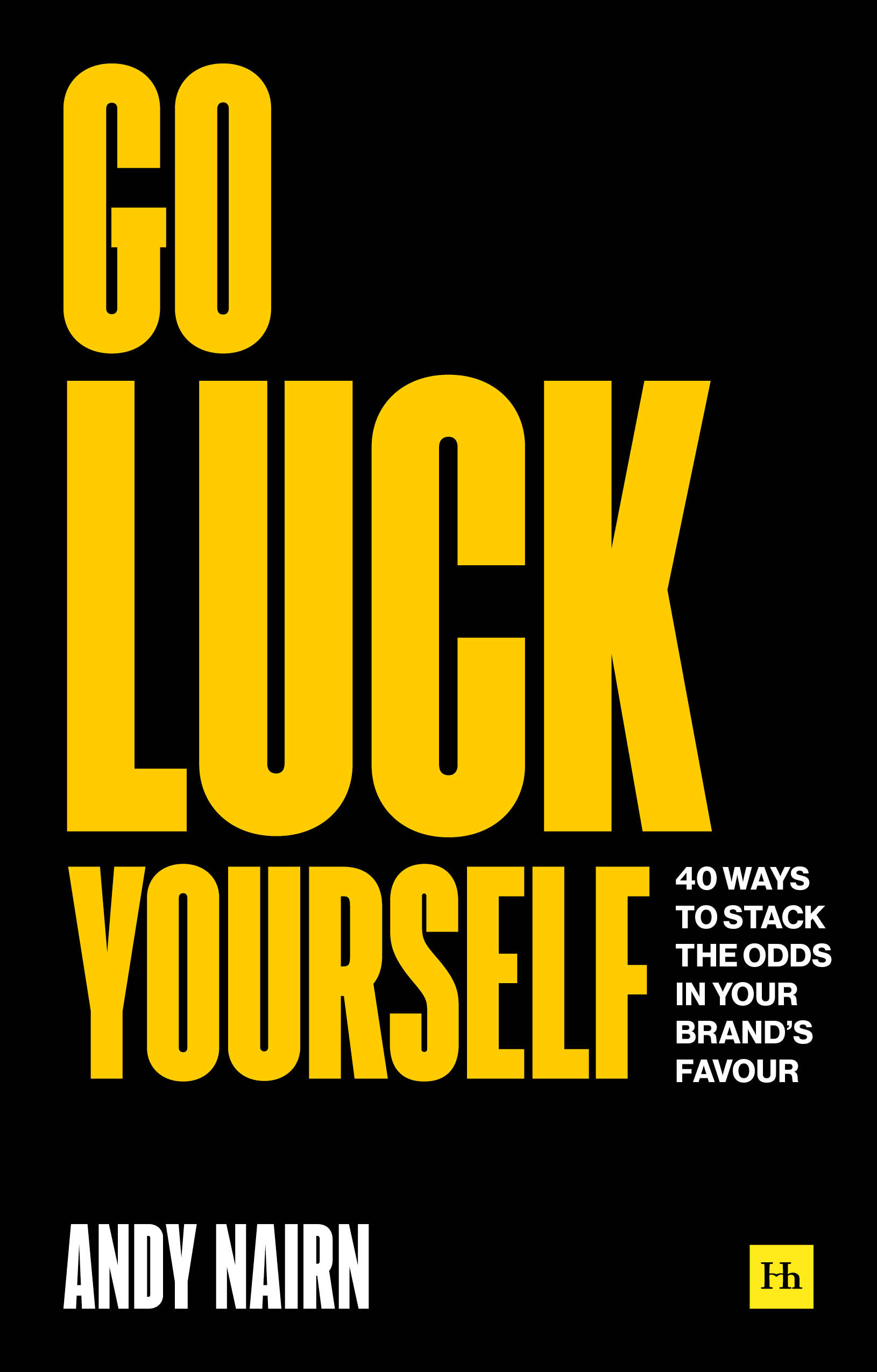Andy Nairn has just launched a new book called Go Luck Yourself: 40 ways to stack the odds in your brand’s favour. Here, he picks out 5 lucky lessons from some classic effectiveness case-studies.
The author E.B. White once warned that “Luck is not something you can mention in the presence of self-made men.” Well, the same probably applies to anyone who has written an effectiveness paper. Obviously, they involve huge amounts of work and mountains of evidence, so it seems downright rude to suggest something as superficial as chance might have played a part. However, as someone who has dabbled in this field, both as a writer and a judge, I believe luck has had a hand in most of the success stories, including my own.
This doesn’t make them flukes or less worthy of respect. In fact, quite the opposite, it should excite us that we can all stack the odds in our brands’ favour.
With that in mind, here are 5 lucky lessons from WARC’s impressive database.
1. Look under your nose
One of the great lessons about luck is that we should all be more grateful for what we’ve got. I believe that this applies to brands too: often organisations possess incredibly valuable assets that they just don’t appreciate. The flip side is that some of the biggest success stories have come from smart people recognising an opportunity that’s staring them in the face.
Johnnie Walker’s long-running “Keep Walking” campaign is a great example of this. The team at BBH realised that they needed to align the brand with a more modern form of masculine success: one that was more about progress than wealth. Then the answer jumped out at them from the bottle: the name Johnnie Walker gave them permission to encourage people to “Keep walking” and the “striding man” icon could be flipped so that he was walking forwards, from left to right. What lucky opportunities are hiding from you, in plain sight?
2. Rummage about the attic
Another place to look for luck is your corporate loft. There’s a great Weetabix case study from the 2018 IPA Effectiveness Awards, called “A Rembrandt in the attic”. In it, Tom Roach rightly points out that many organisations possess treasures from the past that could be priceless now.
This was certainly the case for Hovis when I worked on it. Successive agencies had been told to “avoid history”, because the brand’s problem was that it was seen as old-fashioned. But after a look through its archives, we realised that an old line could be repurposed to present Hovis as being bang up to date: “As good today as it’s always been.” Our campaign won the 2010 IPA Grand Prix, was voted the British public’s Ad of the Decade and generated £94m of profits in the first two years alone. What gems are lurking in your attic?
3. Look out for opportunities everywhere
Luck isn’t always close to home though. Sometimes the biggest opportunities lie in other fields – as when scientists discover a treatment for one ailment, while researching another.
Lots of the great effectiveness case studies fit this description. For instance, there are famous papers by BMW, Magnum and Snickers that were influenced by movie marketing. Meanwhile CALM’s iconic “Project 84” was inspired by journalism and the modern thirst for powerful images. And of course many of the best case studies these days are informed by psychology and behavioural economics. What lucky learnings could you pick up from somewhere completely different?
4. Turn misfortune into good fortune
Winston Churchill once said that “You never can tell whether bad luck might after all turn out to be good luck.” A lot of the most effective campaigns channel that optimistic spirit: they take an apparent weakness (whether it’s a product flaw, category taboo, financial constraint or plain old mistake) and turn it into a strength.
Stella Artois did this brilliantly, back in the day. The brand was pricier than its rivals, because its higher alcohol content attracted a higher level of duty. But Lowe turned this disadvantage on its frothy head, by arguing that the beer was “reassuringly expensive”. The campaign ran for years and made the brewers millions. What problem could you turn into profit?
5. Make room for luck
Finally, while the best effectiveness case-studies have a ruthless logic, they also sparkle with magic. They involve surprise discoveries, happy accidents and unforeseen effects. And they are all the better for it.
The long-running John Lewis campaign is a great example of this. Adam & Eve’s 2020 IPA Gold-winning paper is packed with persuasive facts, drawn from a decade’s worth of effective advertising. But it explicitly makes the point that much of this success has frankly been illogical – from the choice of storyline (a dog on a trampoline anyone?) to the subjective question of music. The agency’s process has therefore evolved to encourage serendipitous decisions, rather than iron them out. How could you make more room for luck in your process?
Maybe this last one is the most important lesson of all. Many modern business processes are designed to eradicate chance – but we should actually look for ways to encourage it. Put another way, luck isn’t the enemy of effectiveness, it’s its friend.
Go Luck Yourself by Andy Nairn is published by Harriman House. He will be donating all his royalties to Commercial Break, a social enterprise that helps working class youths get a lucky break into the media industry.

You can pre-order it now here or from Amazon.co.uk.

